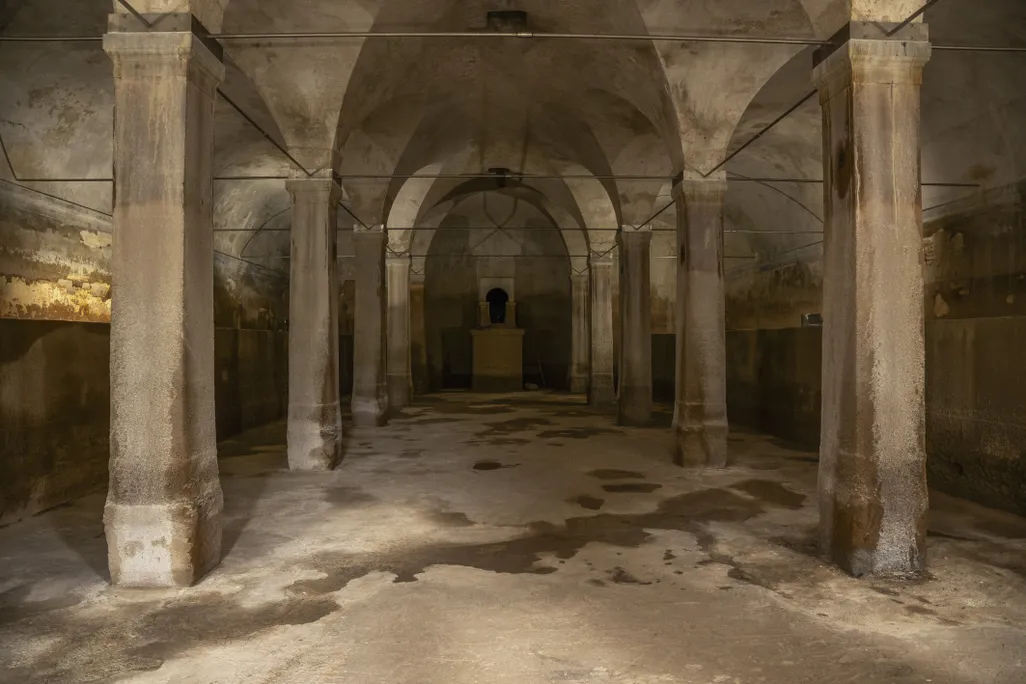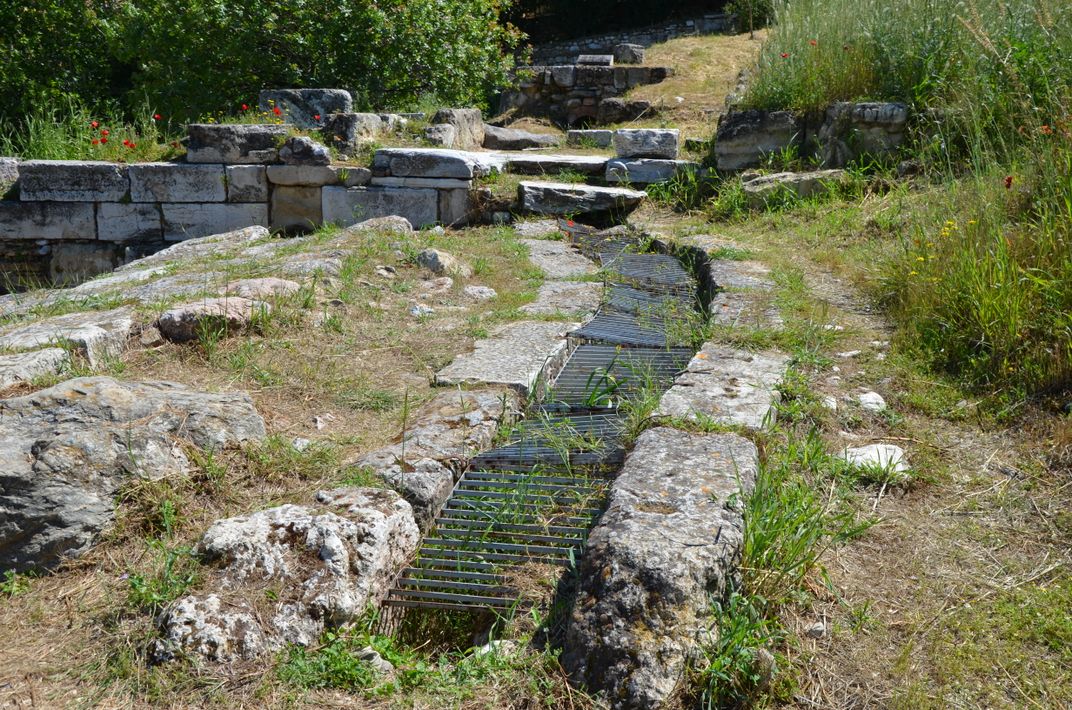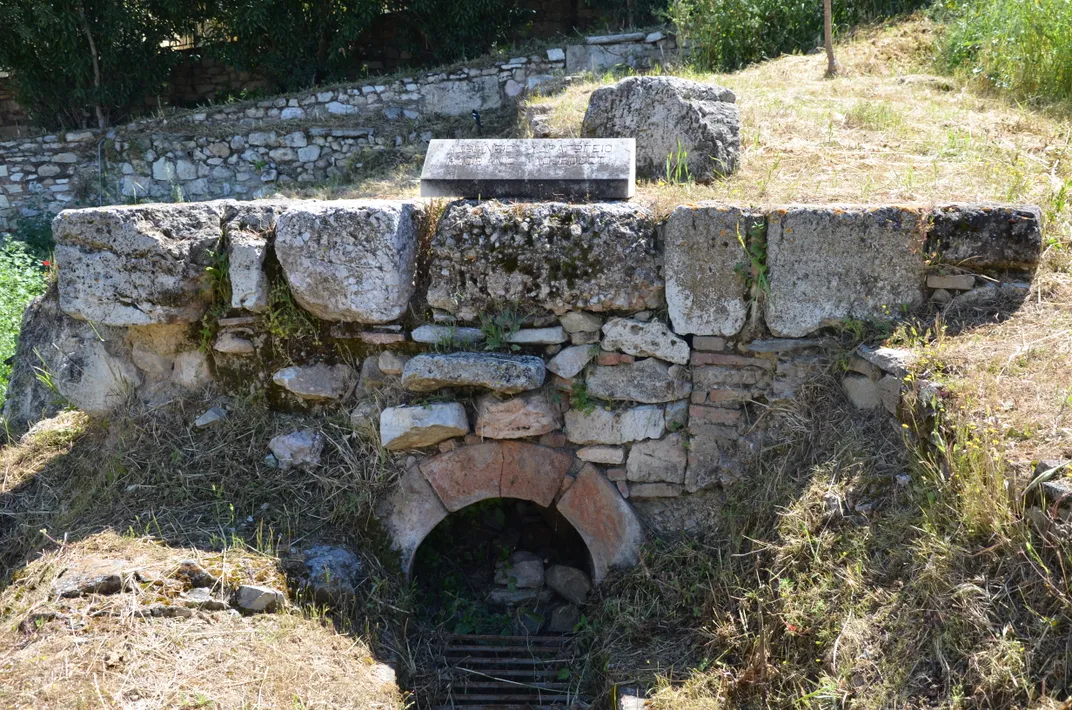Athens Is Reviving a 2,000-Year-Old Roman Aqueduct to Deliver Water to the City Amid Prolonged Droughts
With the capital’s reservoirs approaching historic lows, officials are turning to ancient engineering to conserve potable water

When some residents of Athens, Greece, turn on their sinks, showers and public fountains later this month, water will flow to some taps from an ancient source: a 2,000-year-old underground aqueduct originally built by the Roman Empire.
Hadrian’s Aqueduct, commissioned by Emperor Hadrian in 125 C.E. and completed in 140, is one of several projects the ruler, known for his proclivity to build, has to his name. The aqueduct was originally constructed to fulfill the empire’s ancient water needs and sustain Athens’ public baths. Sloping underground channels collect water from rivers and streams and rain via a network of several hundred wells that were drilled along its length, likely by enslaved workers.
The gravity-fed waterway snakes its way throughout the capital, extending for 15 miles. For 1,300 years, the system operated flawlessly, falling out of use only when Ottomans occupied the city in the 15th century.
Though it was briefly used again during a water shortage in the 19th century, the aqueduct hasn’t been functional in many years. The central reservoir, to which the aqueduct’s waters flow, sits abandoned beneath a public square called Dexameni (the Greek word for “reservoir”), a cafe and outdoor cinema.
Quick fact: The wells of Hadrian’s Aqueduct
Of the aqueduct’s original 456 wells, about 390 are known to have survived—174 of which can be seen in public spaces.“Ninety-five percent of customers don’t know the aqueduct exists,” Nektarios Nikolopoulos, the cafe’s owner, told the New York Times’ Niki Kitsantonis last year. “They know Dexameni for the cafe, not its history.”
Two millennia after Hadrian’s initial decree, Athens’ residents will soon be reacquainted with this ancient infrastructure. Over the past decade, as a prolonged drought has continued to make water scarce, municipal leaders have explored creative measures to stabilize the long-term supply. One obvious answer was right beneath their feet.
“It’s quite simple. We pull the water out of a Roman well, we process and filter it in a modern unit next to the ancient one, and from there it goes to homes,” Giorgos Sachinis, director of strategy and innovation at the Athens Water Supply and Sewerage Company, tells Kitsantonis for National Geographic.
For an initial trial, a 2.5-mile pipeline has been built to connect the central reservoir with suburban homes. National Geographic reports that the pipeline will supply civic buildings with non-potable water. Eventually, the water will go to about 80 houses.

“It’s very exciting that something built 2,000 years ago will be used by modern Greeks for such an important reason,” Eleni Sotiriou, a 65-year-old Athens resident, tells National Geographic. “We have to be careful. There isn’t an unlimited supply.”
The plan is expected to begin in the coming weeks, and it couldn’t have come at a better time. The city’s reservoirs are coming close to record seasonal lows, previously set in 2008.
According to a new regional analysis, Athens’ two main reservoirs—Lakes Mornos and Evinos—are hovering around 60 percent of their usual surface area this July, down from 79 percent at the same time last year and nearly 100 percent in 2022.
“These findings confirm increasing hydrological pressure on Athens’ water system and highlight the urgent need for public awareness and immediate governmental action,” Haralambos Kontoes, a remote sensing expert at the National Observatory of Athens, tells Yiannis Elafros of Kathimerini, a daily newspaper in Athens.

The region’s water supply has been dwindling for years, a crisis attributed to prolonged drought and exacerbated by scorching heat waves, tourism and rampant regional wildfires. Blazes earlier this month displaced more than 1,000 people in Crete and damaged homes near Athens.
Last September, after the country’s hottest June and July on record, the Mornos Dam—located 124 miles west of Athens—dried up, revealing the ruins of a town that last stood above water in the 1970s.
If the Hadrian’s Aqueduct revitalization proves successful, it could become a model for other major cities experiencing water shortages.
“There are plans to expand in the other boroughs of Athens that the Hadrian Aqueduct runs [through],” Christos Giovanopoulos, the project manager of the revitalization effort, told Euronews’ Paul Hackett last summer. “But also we have started a collaboration with another five, six cities in Europe that combine cultural heritage with water heritage to make more green, sustainable and livable cities.’’

